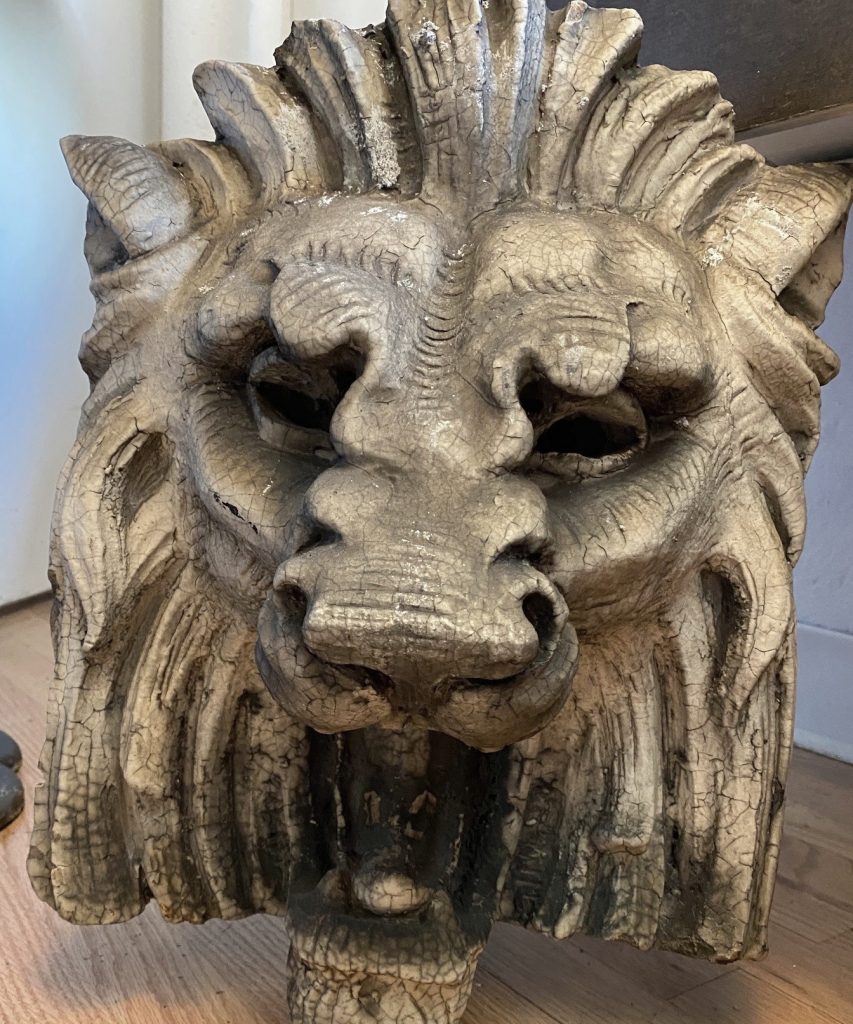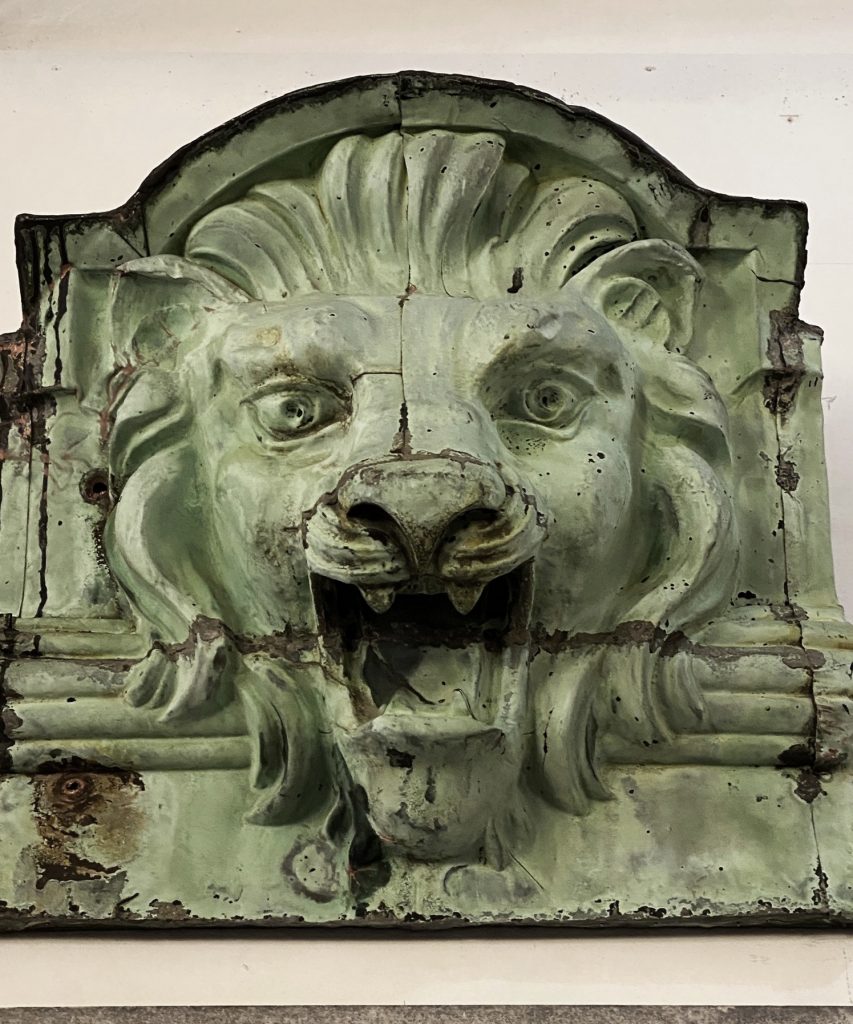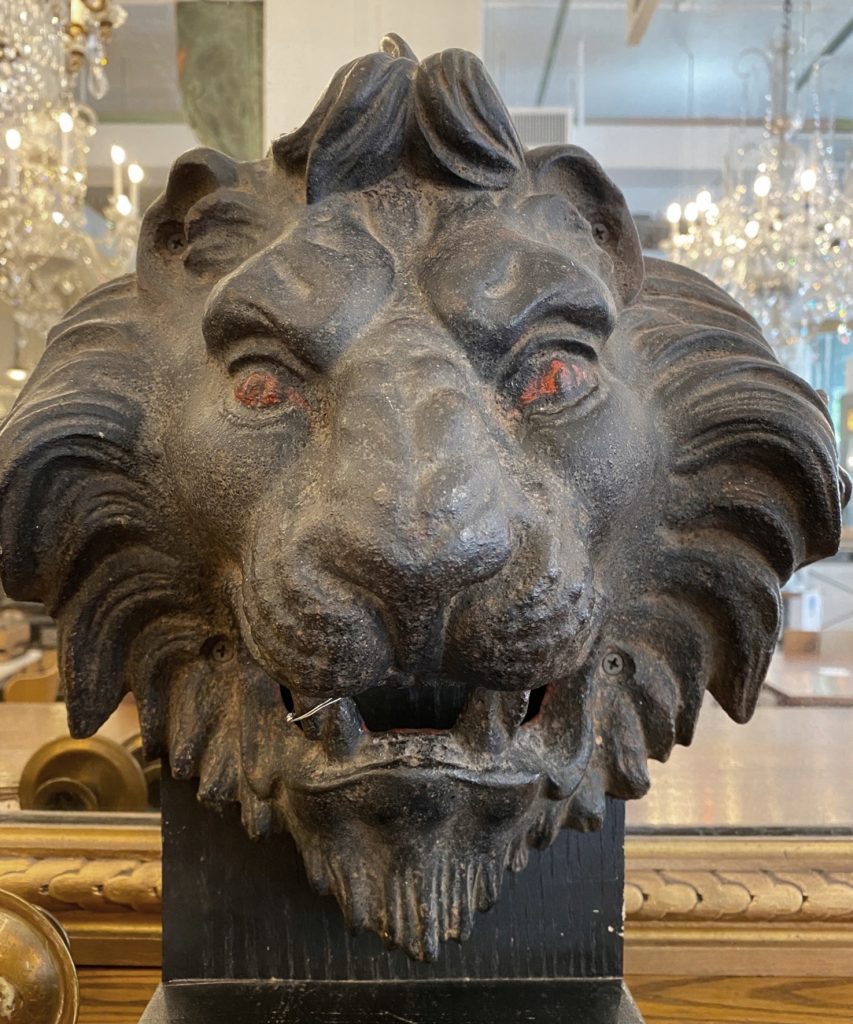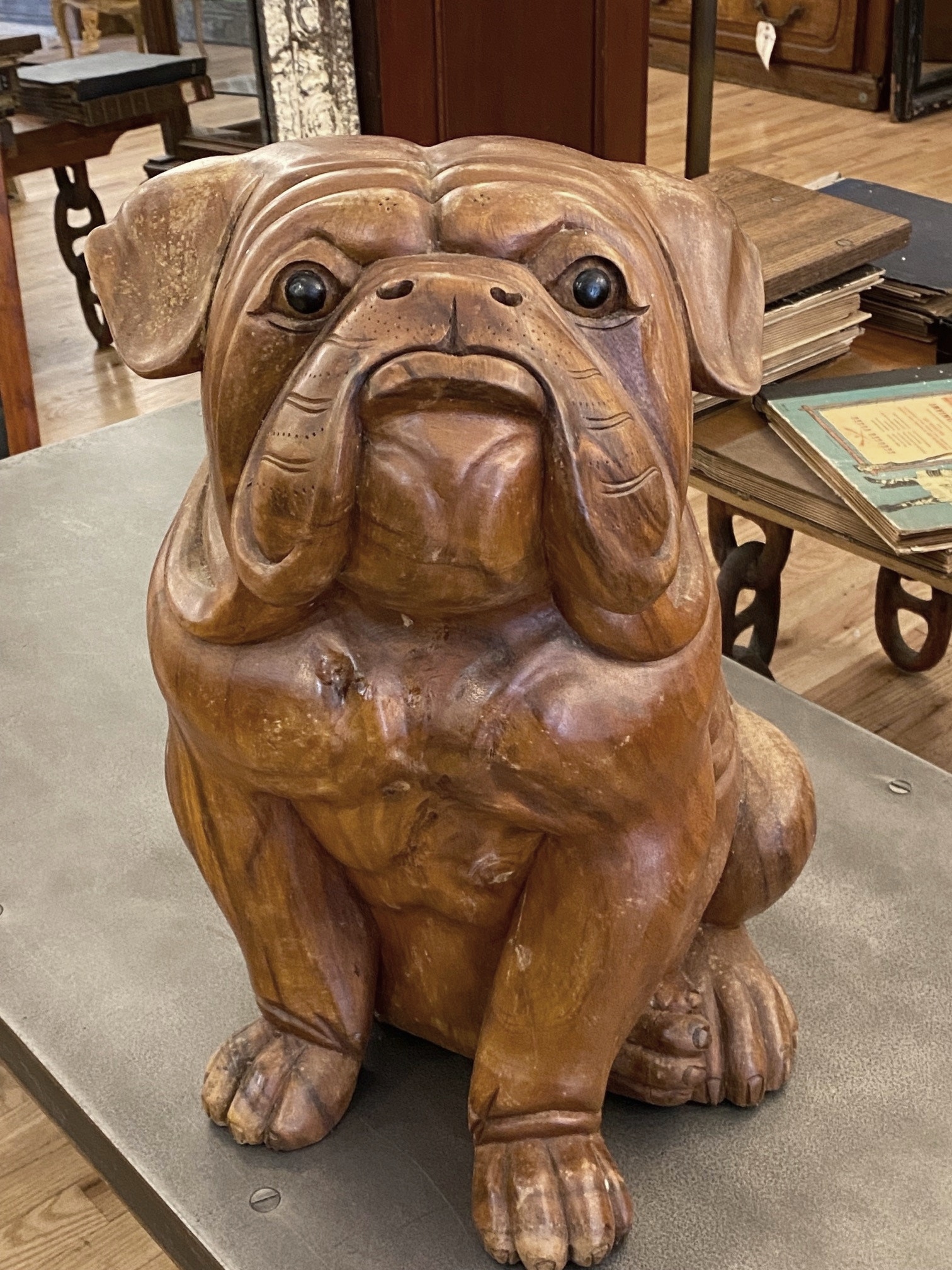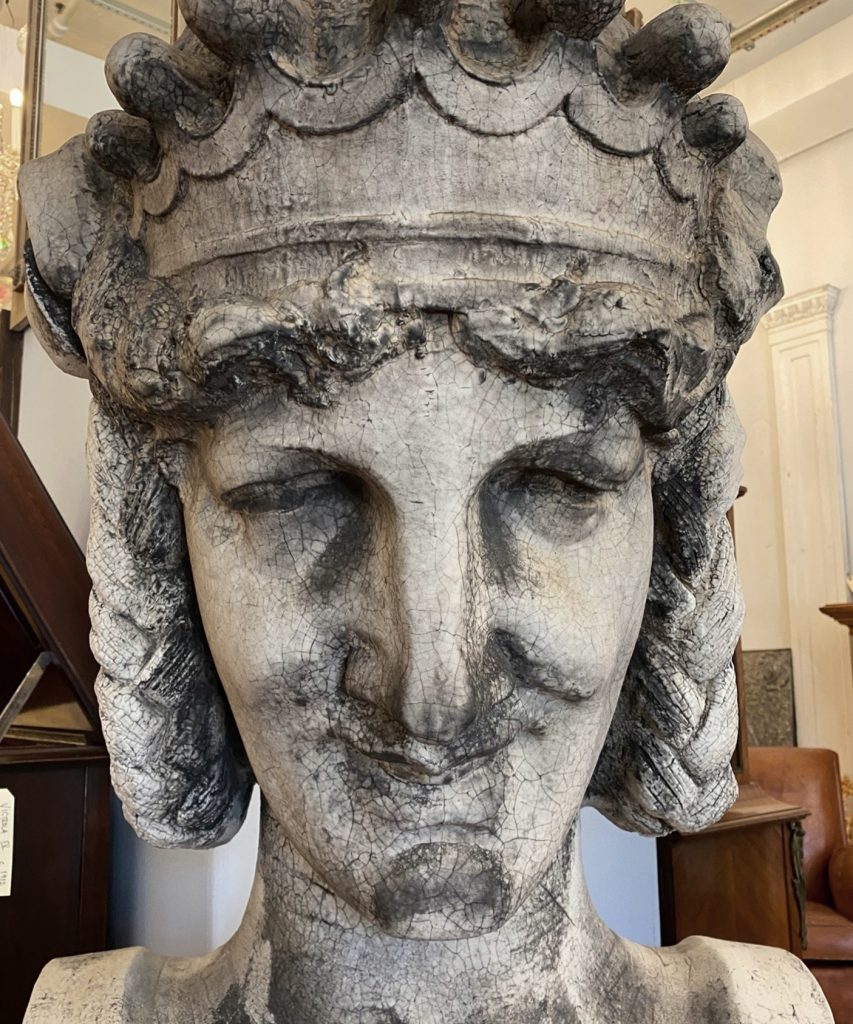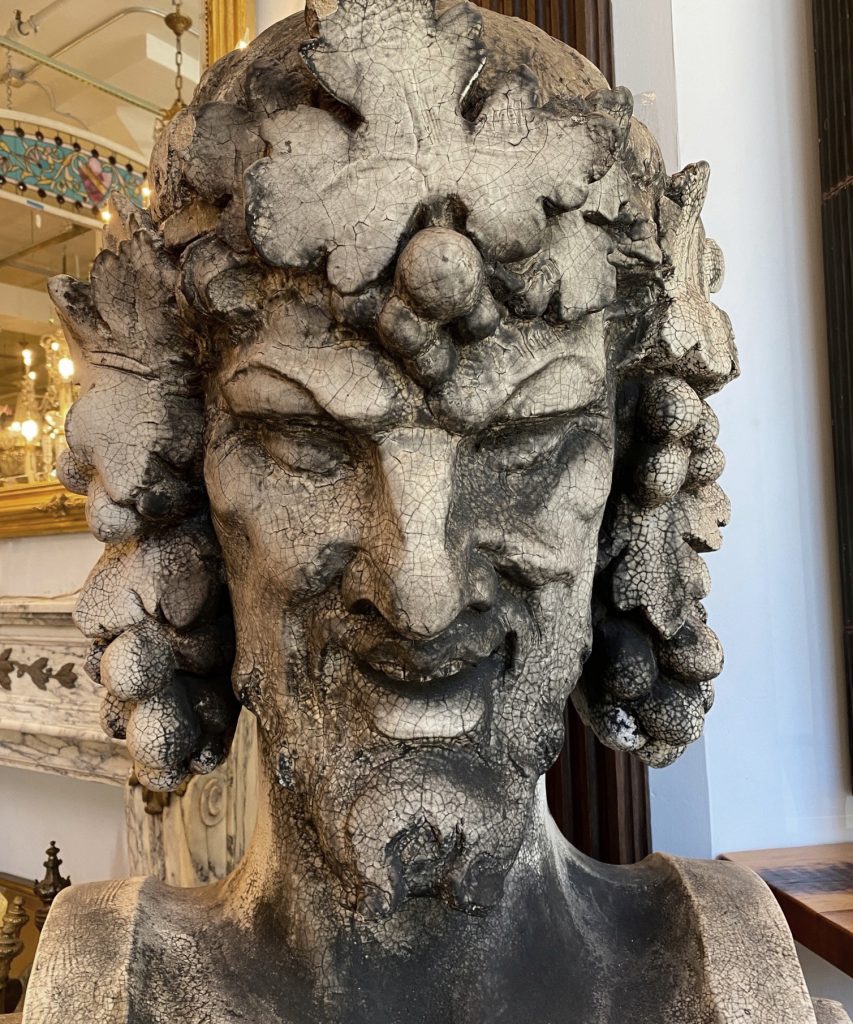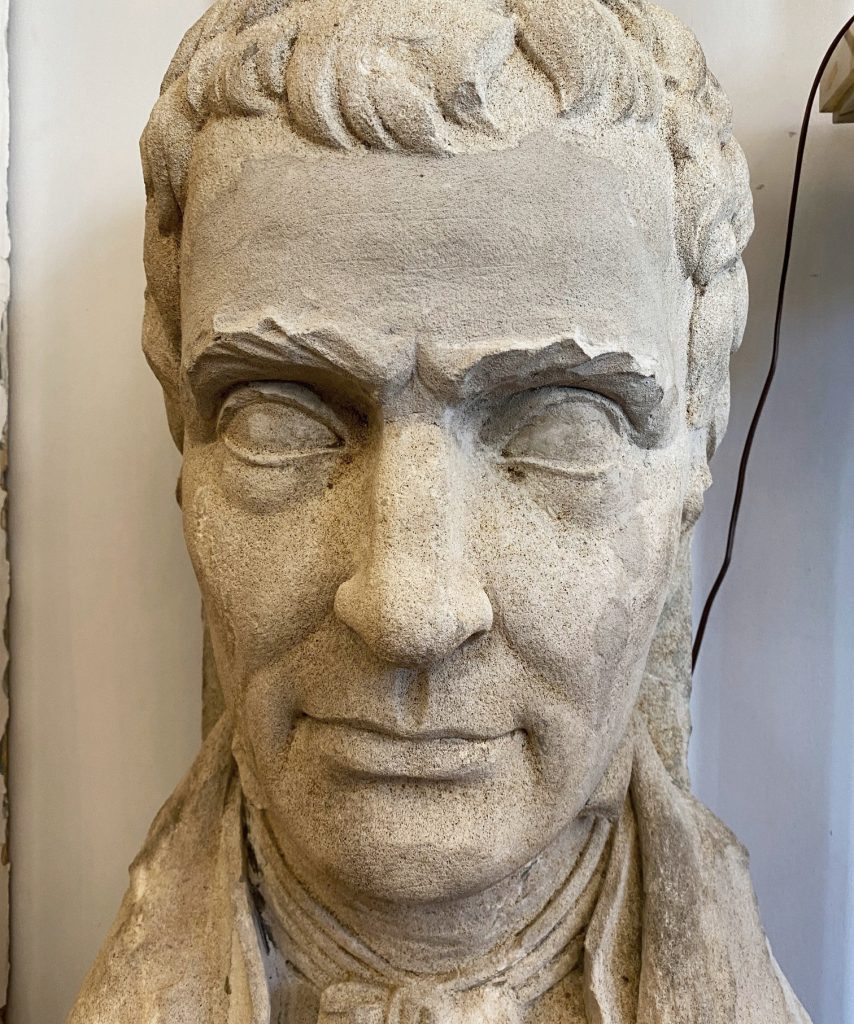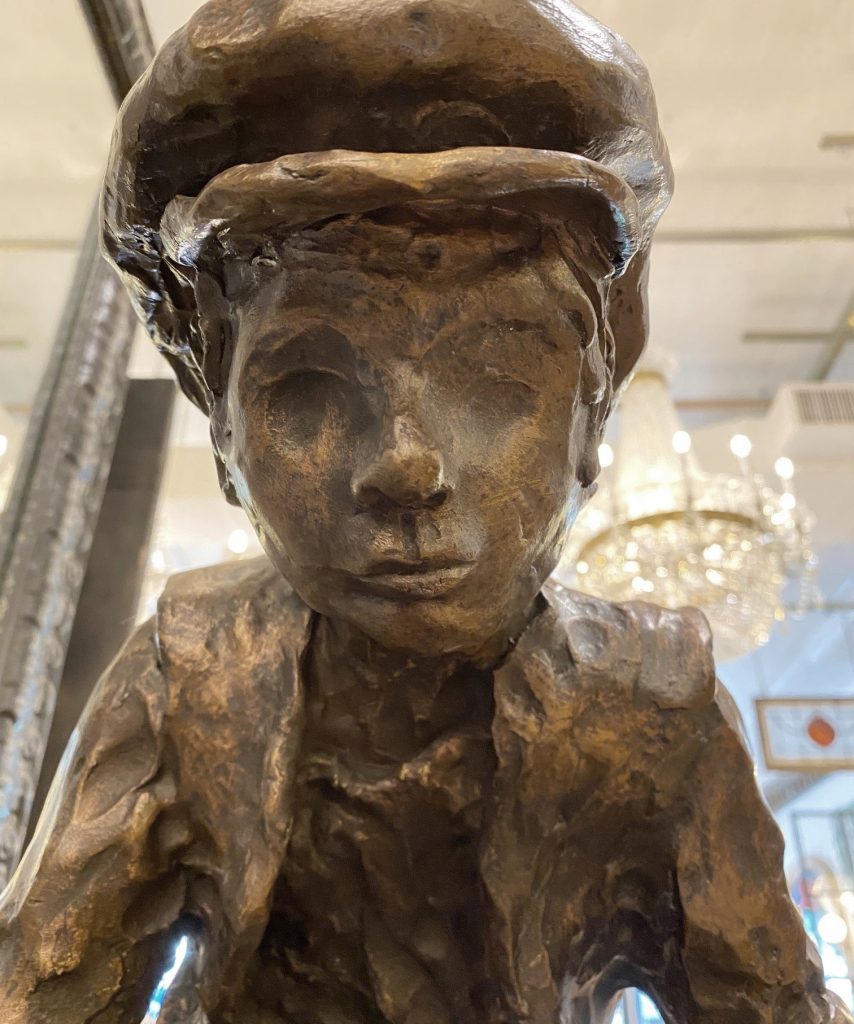Architectural relics often spin a tale that reflects the storyline of cultural heritage. Statues mounted to guard over human endeavors are a common thread that sews together architectural history from ancient times to the present, along with statuesque art that reflects the values or daily lives of a place’s inhabitants.
Mythological griffins are creatures with the body of a lion and the head and wings of an eagle. Griffins were guardians of secret wealth and morphed to become a heraldic symbol of nobility in architecture and on noble crests.
The earliest known griffins in architecture decorated palaces in the ancient Persian Empire, where they were seen as guardians of light. Lions and eagles were both common symbols that decorated the buildings that housed royalty, and the griffin is a combination of the qualities of both.
- Architectural Cast Iron Lion from 15 Laight Street NYC, former home to the Tribeca Film Festival
- Terracotta Lion Head from the Vanderbilt Hotel, NYC
- Copper Lion Head from Building Cornice 417 Park Ave, NYC
- Cast Iron Architectural Lion Head (unknown origin)
Lions have long been a symbol of royalty, nobility, and strength. They have been featured in art and architecture throughout world cultures.
In the US Capitol, depictions of lions can be found at the Grant Memorial, Senate fountain, Rayburn House office building, Capitol Business Center, and Thomas Jefferson building, to name a few.
But lions have been a symbol of power since the beginning of art and architecture. One of the earliest examples may be the carved mammoth ivory statue of a man with a lion’s head discovered in a cave in Germany.
From ancient Iran and Egypt to Trafalgar Square in London, statues of lions preside like kings over the constant river of humanity that flows by.
The bulldog is a somewhat controversial symbol of Britain. The dog in this carved statue is a British bulldog; the shape of the ears gives it away.
During the 1700s, fans of the banned sport of bullbaiting honored the bulldog as a symbol of courage and determination. The Old English Bulldog was muscular and stocky with a steel-trap jaw. In the 18th century, the breed is featured beside a lion and the female symbol of Britannia in many political cartoons. The bulldog became a widespread symbol of Britain during WWII when then Prime Minister Winston Churchill was called the “British Bulldog” for refusing to back down against the Nazi regime, and the bulldog became a symbol of fierce national loyalty and courage.
- Terracotta Head of Ariadne ( Bacchus’s wife )
- Terracotta Head of Bacchus
Architecture is one medium for bringing the stories of the mythological and legendary and preserving these stories for thousands of years. The gods, goddesses, heroes, and creatures of a culture’s mythology were incorporated into architecture and statues to summon their qualities to a place — state buildings, temples, pyramids, and the estates of the wealthy all tell these stories.
Bacchus, the Greek-turned-Roman god of wine and frivolity, along with his wife Ariadne, is shown in this collection of architectural salvage at Olde Good Things.
- Carved Limestone Head of Robert Fulton from the Fulton Savings Bank Flatbush Ave. Brooklyn, NY.
- A bronze face of boy playing marbles by Philip C….. (indistinct signature)
Other pieces are a tribute to the human components of culture, like this bust of American inventor and engineer Robert Fulton, or this statue of a boy shooting marbles.
For more faces of history and other architectural salvage finds, visit one of our locations or contact us at Olde Good Things.


